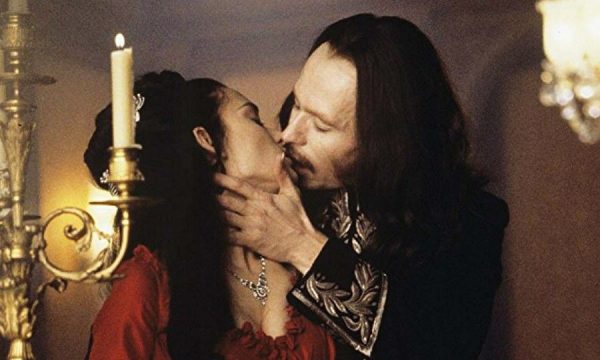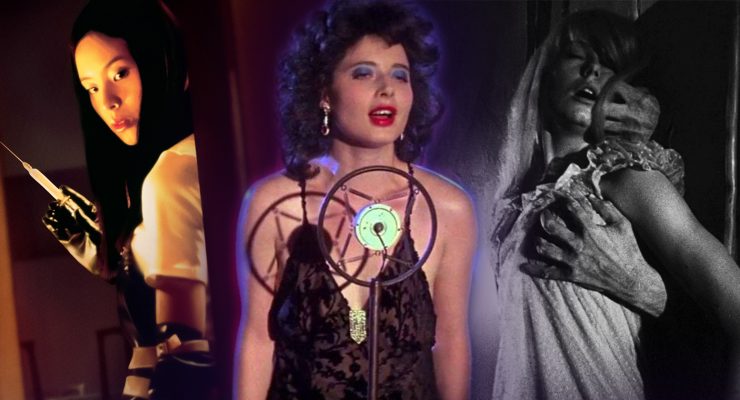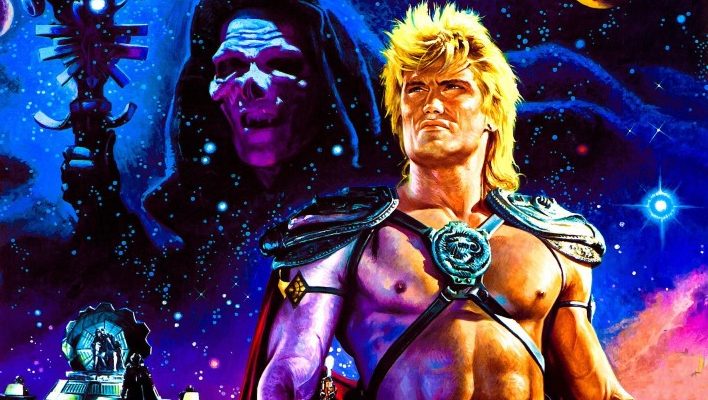On its thirtieth anniversary, Hasitha Fernando looks at the story behind the 1994 big screen adaptation of Anne Rice’s Interview with the Vampire…
Vampires flicks have been around for the longest time but Interview with the Vampire certainly set a benchmark by delivering a vampiric tale that delivers the proverbial goods in terms of performances, artistry and storytelling and as the effort celebrates its 30th anniversary we take a look at the behind-the-scenes story of its creation…
Production was stuck in development hell for the longest time
Anne Rice began her professional writing career with the publication of Interview with the Vampire in 1976. The success of her debut novel prompted Rice to pen a series of sequels and these became known later as the Vampire Chronicles. The rights to the author’s first effort were purchased by Paramount Pictures even before its publication since the studio foresaw the potential of the IP. However, script development languished in developmental hell for a number of years and the property too changed hands with multiple studios begore finally ending up with Warner Bros.
Following the impressive box-office run of The Crying Game, Warner Bros. approached its director Neil Jordan to helm Interview with the Vampire. Jordan was drawn to the project immediately and after he finished reading the novel his interest in directing the film only increased. But the filmmaker made a small request to the studio before he came on board and that was to let him craft his own script for the movie. Warner Bros. agreed and allowed Jordan to do his thing though the solo script credit went to Anne Rice in the end.
The movie was given an astonishing budget that was unusual for a genre film
Genre films in general are historically well known to have very modest production budgets. But when it came to Interview with the Vampire the effort was given an astonishingly high budget of $70 million, which was unprecedented for a risky, blood-soaked genre film of this nature. And it was all thanks to former records executive turned movie producer David Geffen that this substantial production budget got allocated for the vampire flick. During an interview Jordan stated the following, “Vampire movies were traditionally made at the lower end of the scale, on a shoestring, on rudimentary sets. David Geffen is very powerful and he poured money into Interview. I wanted to make it on an epic scale of something like Gone with the Wind.”
Francis Ford Coppola’s Dracula was a major inspiration for the movie
Vampire films have been around since the inception of cinema with the likes of F. W Murnau’s Nosferatu and the Dracula movies popularized by Bella Lugosi and Christopher Lee’s Hammer Films series. But one thing that was common in these genre films was the modest budget that they all possessed. This changed, however, with Francis Ford Coppola’s Bram Stoker’s Dracula which boasted a then unheard of $40million budget which meant more extravagant sets, lavish costumes and an improved production quality overall. So, when Neil Jordan took over the reins of Interview with the Vampire he too wanted to follow in Coppola’s footsteps to create a vampire horror that had an epic sense of scale along with compelling characters and an engrossing story which would appeal to audiences.
SEE ALSO: Bram Stoker’s Dracula: Overblown, Excessive and Indulgent But Brilliant
Anne Rice wasn’t a huge fan of Tom Cruise’s performance
When Anne Rice adapted her novel into the screenplay of Interview with the Vampire, the author had a few actors in mind to embody the roles of both Lestat and Louis. Initially, the writer envisioned French actor Alain Delon for Louis and during the casting stage of the project heavily championed for British actor Julian Sands to play Lestat. Unfortunately, Sands wasn’t a particularly well-known name at the time and thus the studio rejected that option and instead cast Tom Cruise in the role. At that point in time Cruise was already a superstar with efforts like Rain Man, Born on the Fourth of July and A Few Good Men to his name and therefore received a record $10million salary along with a percentage of the film’s profits.
Rice was bitter about the studio’s casting choice and openly criticized the move saying Cruise was “no more my vampire Lestat than Edward G. Robinson is Rhett Butler.” The novelist couldn’t get her head wrapped around Cruise being Lestat and even recommended other actors including the likes of John Malkovich, Peter Weller and Jeremy Irons who she though would be better than Cruise for the role. Rice even suggested Cruise and Brad Pitt swapping their respective roles but the studio disagreed. Later on, after seeing the completed film, Rice was satisfied with Cruise’s take on the character and even called him to compliment his performance and admit that she was in the wrong.
The ensemble cast underwent a gruelling process to play the vampires
Interview with the Vampire boasts one helluva stacked cast starting from the lead actor Tom Cruise and Brad Pitt to some of the best up-and-coming talents including Christian Slater, Antonio Banderas, Thandie Newton and Kirsten Dunst. However, playing the vampires in the film meant they had to undergo a grueling process during their make-up sessions which also required them to hang upside down for over thirty minutes at a time so that the make-up artists could trace over the swollen veins created by the blood in their bodies rushing to their heads. This created an otherworldly, almost translucent effect on the vampires skins which contributed to their preternatural aesthetic in the film. The troublesome aspect of this process was that the make-up team had to sometimes repeat the process several times over since the blood would quickly get drained from the actor’s heads. As a result, the make-up sessions during the shoot took up a considerable amount of time and effort.
Brad Pitt was pretty miserable throughout production
It’s hard to imagine someone like Brad Pitt wanting out from a production but that was exactly what nearly happened when the actor was shooting Interview with the Vampire. During the 1990s Brad Pitt was one of the most sought after actors with critically lauded films such as Thelma & Louise, Legends of the Fall, Se7en and 12 Monkeys under his belt. During an interview with EW in September 2011, the Hollywood icon revealed that he had a miserable time on the set of Interview with the Vampire. The discomfort of wearing colored contacts and having been covered in makeup for the entirety of the shoot had a negative impact on the young actor. So much so, he practically begged his close friend and producer David Geffen to let him go and have someone else be cast instead. But learning that it would setback production and cost an additional $40 million Pitt decided to stay on.
Kirsten Dunst was 10 years old when she tested for the role of Claudia
In her youth Kirsten Dunst made a name for herself with films like Little Women and Jumanji before moving on to lead roles in teen movies such as Drop Dead Gorgeous and The Virgin Suicides. Dunst received a wider attention with Sam Raimi’s Spider-Man trilogy and tackled more serious affairs later on with the likes of Elizabethtown, Melancholia, The Power of the Dog and Civil War. But it was with Interview with the Vampire that Dunst got her big career break, quite early on in her career, as a ten-year-old when she was cast as the charmingly precocious child vampire Claudia. The actress was selected from over thousands of other girls who auditioned for the role including Julia Stiles, since her audition was just too good to be true.
Christian Slater donated his entire salary to charity organisations in memory of River Phoenix
River Phoenix was one of Hollywood’s rising talents before he was stolen from us under tragic circumstances. The late actor was cast in the role of Daniel Molloy but sadly passed away just four weeks prior to when production was supposed to begin. Christian Slater was cast, at the very last moment, in his stead and the actor donated his whole salary to Phoenix’s favorite charity organizations. The producers went a step further and dedicated the film to Phoenix in the end credits, in memory of the actor.
Anne Rice nearly changed the sex of Lestat
In the early 1990s Hollywood was a much different place to what it is today and because of that Anne Rice even wanted to rewrite the part of Louis and change his sex to female in order to heterosexualize the two lead character’s relationship. Rice believed that by doing this alteration, she’d have a better chance of getting her script made. Pop-singer Cher was even considered for the role and even went to the extent of composing a song with Shirley Eikhard for the movie’s soundtrack titled “Lovers Forever”. However, after Pitt got cast as Louis the song got rejected but a dance-pop version of it did make into Cher’s 2013 album, Closer to the Truth.
Box office success, critical acclaim & the launch of a franchise
Interview with the Vampire was a bona fide box-office success, grossing $224 million worldwide on an estimated production budget of $70 million. At the time it was the biggest non-summer opening and the biggest R-rated weekend ever surpassing Lethal Weapon 3. The movie would hold this record until 1997 when Air Force One surpassed it. On Rotten Tomatoes the flick retains an approval rating of 63% with the sites critic consensus reading: “Despite lacking some of the book’s subtler shadings, and suffering from some clumsy casting, Interview with the Vampire benefits from Neil Jordan’s atmospheric direction and a surfeit of gothic thrills.”
High praise was showered on the film’s production design, cinematography, musical score and the performances by the lead actors. The Chicago Sun Times’ Roger Ebert gave the effort three out of four stars stating: “the movie never makes vampirism look like anything but an endless sadness. That is its greatest strength. Vampires throughout movie history have often chortled as if they’d gotten away with something. But the first great vampire movie, Nosferatu, knew better, and so does this one.”
At the Academy Awards the movie received two nominations for Best Art Direction and Best Original Score for film composer Elliot Goldenthal and at the Golden Globes Kirsten Dunst received a nomination for Best Supporting Actress for her exquisite performance as Claudia. The critical and commercial success of Interview with the Vampire naturally emboldened all involved to pursue making sequels but none properly materialized. Almost a decade after the original’s release an adaptation of the third book in the Vampire Chronicles, The Queen of the Damned debuted, which sadly received scathing reviews and even got disowned by the writer herself.
After multiple botched attempts the rights to the novels eventually reverted back to Anne Rice and this led to the creation of the Interview with the Vampire TV series at AMC which has gone on to receive acclaim and praise. The future of Anne Rice’s works being adapted as feature films remains unclear but one can truly hope things will fall into place which would inevitably lead to a high-quality output similar to what we got all those years ago.
What are your thoughts on Interview with the Vampire? Let us know on our social channels @FlickeringMyth…
Hasitha Fernando is a part-time medical practitioner and full-time cinephile. Follow him on Twitter via @DoctorCinephile for regular updates on the world of entertainment.























